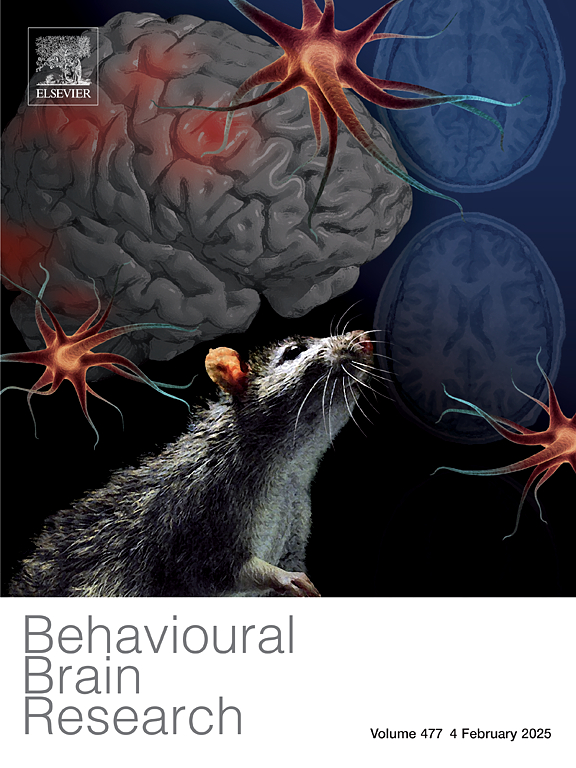Differences in frontal cortical brain function between individuals suffering from pathological mental fatigue following acquired brain injury and healthy individuals
IF 2.6
3区 心理学
Q2 BEHAVIORAL SCIENCES
引用次数: 0
Abstract
Pathological mental fatigue (PMF) is a common health concern after acquired brain injuries, with tens of millions affected globally each year. Neuroimaging methods show promising results for establishing associations between PMF and brain function. The aim of this study was to investigate whether and how neural functional activity and connectivity differ during rest and cognitive tasks between people with PMF and healthy controls. Twenty participants suffering from PMF after an acquired brain injury (ABI; stroke or traumatic brain injury) and 19 healthy controls were recruited and underwent cognitive tests and functional near infrared spectroscopy (fNIRS) assessments. The results show that the PMF group and controls exhibited different functional brain activation in the frontal cortex, concerning both neural connectivity and activity. More specifically, the PMF group showed higher Global Efficiency and lower Modularity during resting state and when performing the cognitive tasks Digit Symbol Coding and Symbol Search. The groups also differed in peak oxygenated hemoglobin during the BASE task, with lower oxygenation in the PMF group. In addition, the PMF group was significantly slower than the control group in both neutral and incongruent Stroop trials. However, no group differences were observed in neural activity during the Stroop task, and nor were there differences in reactivity or proactivity as measured using the AX-CPT test. This study has developed the knowledge on the brain correlates of PMF. Future studies should explore the theoretical and practical implications of these results.
后天性脑损伤后病理性精神疲劳与健康人额叶皮质脑功能的差异
病理性精神疲劳(PMF)是获得性脑损伤后常见的健康问题,全球每年有数千万人受到影响。神经成像方法在建立PMF和脑功能之间的联系方面显示出有希望的结果。本研究的目的是调查PMF患者和健康对照者在休息和认知任务中神经功能活动和连通性是否以及如何不同。20名参与者在获得性脑损伤后出现PMF (ABI;中风或创伤性脑损伤)和19名健康对照者接受认知测试和功能近红外光谱(fNIRS)评估。结果表明,PMF组和对照组在额叶皮层表现出不同的功能脑激活,包括神经连通性和活动。更具体地说,PMF组在静息状态和执行数字符号编码和符号搜索认知任务时表现出更高的全局效率和更低的模块化。两组在BASE任务期间的峰值氧合血红蛋白也存在差异,PMF组的氧合水平较低。此外,在中性和不一致Stroop试验中,PMF组显著慢于对照组。然而,Stroop任务期间的神经活动没有观察到组间差异,使用AX-CPT测试测量的反应性或主动性也没有差异。这项研究发展了PMF与大脑相关的知识。未来的研究应探讨这些结果的理论和实践意义。
本文章由计算机程序翻译,如有差异,请以英文原文为准。
求助全文
约1分钟内获得全文
求助全文
来源期刊

Behavioural Brain Research
医学-行为科学
CiteScore
5.60
自引率
0.00%
发文量
383
审稿时长
61 days
期刊介绍:
Behavioural Brain Research is an international, interdisciplinary journal dedicated to the publication of articles in the field of behavioural neuroscience, broadly defined. Contributions from the entire range of disciplines that comprise the neurosciences, behavioural sciences or cognitive sciences are appropriate, as long as the goal is to delineate the neural mechanisms underlying behaviour. Thus, studies may range from neurophysiological, neuroanatomical, neurochemical or neuropharmacological analysis of brain-behaviour relations, including the use of molecular genetic or behavioural genetic approaches, to studies that involve the use of brain imaging techniques, to neuroethological studies. Reports of original research, of major methodological advances, or of novel conceptual approaches are all encouraged. The journal will also consider critical reviews on selected topics.
 求助内容:
求助内容: 应助结果提醒方式:
应助结果提醒方式:


